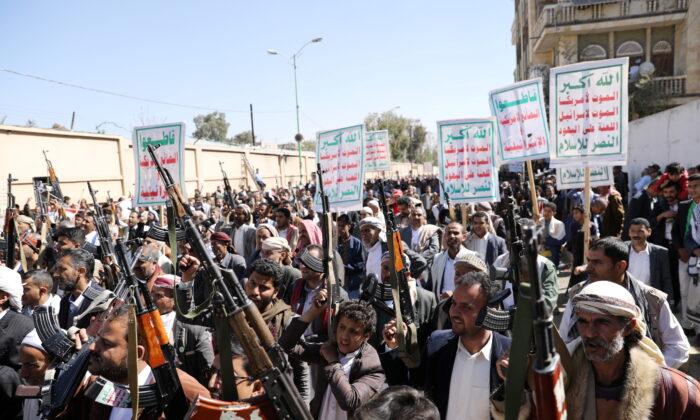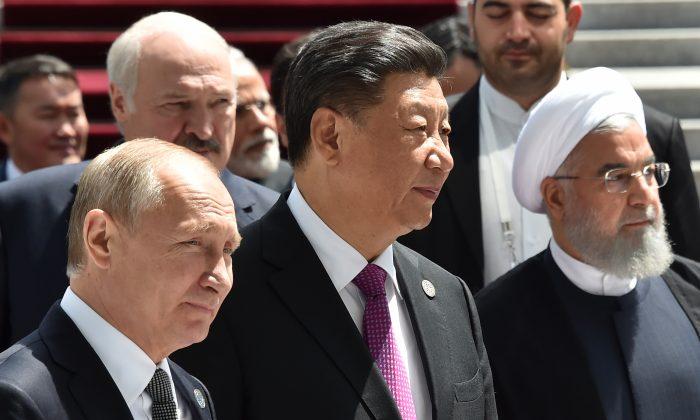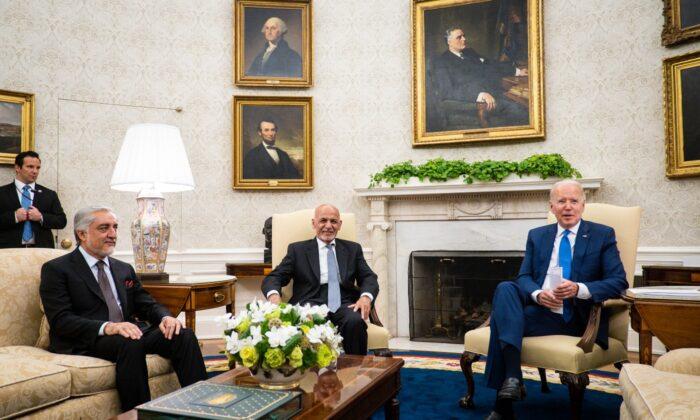A Chinese foreign ministry official recently tweeted a photo showing an Australian special operations soldier in Afghanistan holding a knife to the throat of a child.
The picture was digitally altered, a contrived visual lie spread via the internet with the linked goals of provoking shock and anger in viewers worldwide—and then politically manipulating those human emotions to the benefit of the Chinese Communist Party.
Sky News Australia anchor Rowan Dean called the propaganda a communist Chinese attack on the Australian military, one intended to destroy military morale. From an adversary’s perspective, soldier morale is always a psychological-warfare target. The vile image also targeted the Australian government, which opposes China’s territorial claims and criticizes its dismal human rights record.
Australian Prime Minister Scott Morrison called the fake photo “repugnant” and demanded Beijing issue an apology. Beijing refused to apologize.
Morrison noted China had timed its agitation-propaganda tweet to maximize the image’s political effectiveness.
The Chinese lie leveraged the kind of harsh truth that democracies self-expose when seeking justice. Australia recently released part of the Brereton report, a four-year-long investigation into alleged war crimes by special operations personnel in Afghanistan. The inquiry, led by a major general, found evidence that elite Special Air Service soldiers murdered 39 Afghans in 23 incidents.
The Australian public is appalled. Accepting responsibility for the murders, Australia intends to punish the guilty and pay monetary compensation to the families of their victims. The Department of Defense is reforming the special forces.
The report gave China’s lie superficial credibility. Chinese propagandists seized the moment, yoking their sensational lie to a hard truth produced by a painful democratic process.
The Brereton report is an example of a process that seeks justice, to include admitting guilt and meting out punishment to perpetrators.
The 2,000-plus Chinese victims of the 1989 Tiananmen Square massacre have yet to receive open acknowledgment of their murders, much less justice. CCP propagandists utterly avoid mentioning the massacre by the People’s Liberation Army—Chinese soldiers using tanks, firearms, and bayonets.
Admit guilt? Punish the perpetrators? Pay compensation? The CCP forbids discussing the massacre and has erased it from China’s government-controlled internet. The goal is erasing the event from history.
Why? Because Tiananmen’s mass-murderous truth threatens China’s dictatorship. For that matter, truth of any sort threatens the dictatorship. Witness the intimidation and arrest of Chinese medical personnel who were trying to warn the world about the COVID-19/the Wuhan virus.
The Afghan murders horrify Australians, but it doesn’t threaten the state. Democracies try to self-correct.
The faked photo exploit serves as a useful example of how cunning dictators and amoral political agitators can concoct a lie—fabricate a photo or video, write a false report—and time its release for maximum exposure with the goal of inflicting maximum damage.
In my view, the propaganda attack’s objectives were discrediting and muting Australian criticism of Chinese human rights abuses.
Did the image have political effects in Afghanistan? Could it inflame passions and harm peace negotiations? In a country with a high rate of illiteracy, a photo speaks authoritatively. These questions, time might answer.
The fake will persist in internet eternity. Perhaps one day, it will appear as evidence of imperialist savagery in an anti-Western screed.
Since its creation, the CCP has tried to discredit and intimidate its international critics, with the goal of muting criticism. In the last five years, these efforts have become more overt, particularly those aimed at intimidating individuals. Overseas ethnic Chinese communities have been special targets for intimidation and propaganda campaigns.
The campaigns, often tied to the CCP’s United Front Work Department, include threats of physical violence, theft and release of personal information, and malicious personal lies. Fake photos that damage a person’s reputation to coerce the individual into aiding a Chinese espionage effort? Don’t put it past them.





